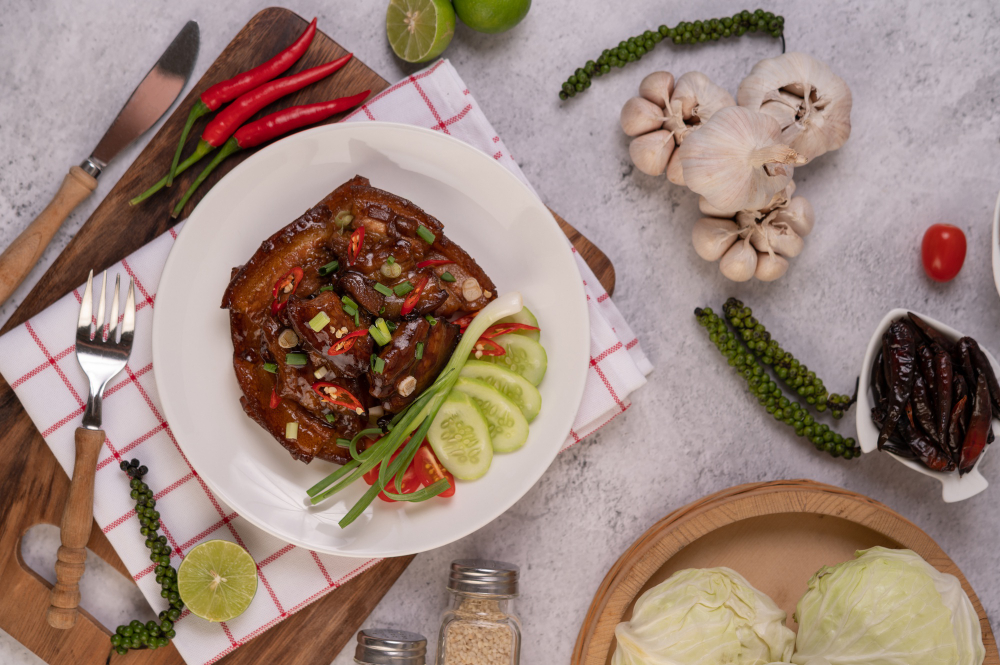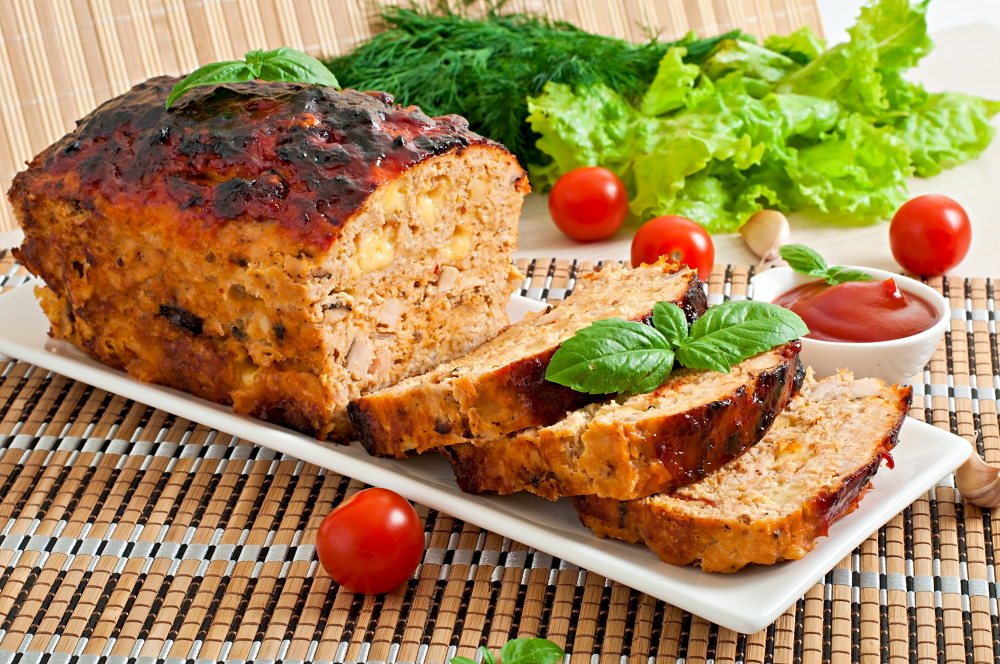Embutido (Filipino-Style Meatloaf)
Embutido is a type of meatloaf that is prepared the Filipino way. Although it is a well-known holiday dish, Embutido can easily be enjoyed every day. Embutido is made with ground pork and packed with sliced ham, hard-boiled eggs, or other sausages. Although it can also be baked, traditionally, it is wrapped in foil and steam-cooked.
Origin
The Spanish term for sausage, Embutido, was the source of the dish’s original name in the Philippines. In the Philippines, dried sausages are now generally referred to as Longganisa or Chorizo, and meatloaf is referred to as Embutido.
The American meatloaf, which was introduced to the Philippines during the American colonial era, is the dish’s original source (1898–1946). This was brought on by the growth of the American canning industry and the influx of canned products and processed meat to the islands. Filipino families adapted canned goods into a variety of cuisines during the time when they were still a new thing.
How to make Embutido
It used to be common practice to begin assembling an Embutido by laying down a layer of caul fat, the web-like fatty lining that surrounds organs in animals like cows, pigs, and sheep (known as Sinsal in Filipino). Nowadays, it’s more typical to see preparations using aluminum foil or banana leaves used as the outside wrapping layer.
Whichever one you choose, fill it with ground pork mixed with finely chopped veggies, sweet relish, and raisins, then load it with hard-boiled eggs, Vienna sausage, or hot dogs, and roll it all up into a log. After being rolled and wrapped, the Embutido is steamed, allowed to cool, and then cut into pieces that can be eaten cold, warm, or even fried.
Embutido can be made in a variety of ways, just like meatloaf. When I was a child, Embutido was served cold, steamed, and contained raisins. Instead of raisins and relish, I added sautéed bell pepper for sweetness, shredded cheddar cheese for smoothness, and Chinese sausage for its salty-sweet flavor, which I think complements the other ingredients in Embutido.
Embutido is typically sliced; it can be done so when hot, but it is more common to chill it so that it won’t fall apart while being cut. You can store it by freezing it. Embutido is typically eaten with white rice and dipped in banana ketchup, sweet chili sauce, or another sweet sauce.
In contrast to American meatloaf, Embutido is often steamed, however it can also be baked.
For this recipe, both were tested. Although steaming results in a smoother, more uniform texture, I liked the baked Embutido’s richer caramelized taste and lighter texture.

Ingredients
- 85g light brown sugar
- 45ml cane vinegar
- 1 tablespoon banana ketchup
- 1 teaspoon salt
- 2 fresh Thai chilies, stemmed, seeded and chopped
- 15ml vegetable oil
- 65g minced garlic
- 1 medium-sized red onion, finely chopped
- 1 large yellow bell pepper, stemmed, seeded, and finely chopped
- 2 medium carrots, peeled and grated on large holes of grater
- 455g ground pork
- 1 ½ cups of shredded medium cheddar cheese
- 85g panko breadcrumbs
- 2 large eggs, beaten
- 2 tablespoons oyster sauce
- 1 tablespoon fish sauce
- 1 teaspoon freshly ground black pepper
- 1 teaspoon soy sauce
- 1/2 teaspoon salt
- 1/2 teaspoon cayenne pepper
- 5 large hard-boiled eggs, peeled
- 2 links of Chinese sausage
- Cooked white rice, for serving
Directions
- For the sweet-and-sour sauce: Add sugar, vinegar, ketchup, salt, and chilies in a small bowl; whisk until thoroughly combined; put aside.
- For the Embutido: Set the oven rack in the center and heat the oven to 375°F (190°C). Cooking spray should be used to grease an 18 by 24-inch piece of aluminum foil (you may also use two 12- by 24-inch sheets of aluminum foil that are slightly overlapping); put aside.
- Heat oil to shimmering in a 12-inch cast iron skillet over medium-high heat. Cook the carrots, bell pepper, onion, and garlic for about 10 minutes, turning periodically, until tender and golden brown. Take the pan off the fire and let it cool for about 20 minutes.
- Pork, cheese, breadcrumbs, eggs, fish sauce, cayenne, oyster sauce, black pepper, soy sauce, salt, and the cooled vegetable mixture should all be combined in a sizable bowl. Mix thoroughly for around 3 minutes with your hands or a firm silicone spatula.
- Place the aluminum foil in the desired position on a work surface, with one longer side parallel to the edge. With your hands, press the meat mixture into an 8 by 15-inch rectangle in the center of the foil. The eggs should be arranged in a single line across the middle of the rectangle. Make sure that the eggs and sausage are touching one another as you arrange the sausage links horizontally in a single line directly above the eggs.
- Lift the edge of the aluminum foil and gently roll the meat (which will release from the foil), folding it over the eggs and sausage and enclosing them in the center of the Embutido. Roll, lift, and roll Embutido with foil until it forms a tight log. Wrap the Embutido in aluminum foil and fold the ends in. Fold the ends of another sheet of aluminum foil around the Embutido.
- Embutido should be transferred to a wire rack positioned within a rimmed baking sheet. Bake for about 1 hour and 30 minutes, or until juices flow out of the foil and caramelize on the baking sheet and the interior temperature reaches 165°F (74°C).
- Transfer Embutido to a cutting board and set aside for 20 minutes, or until cool enough to handle. Cut into 1 1/2-inch-thick slices with a sharp knife and carefully remove aluminum foil.
- Place the Embutido slices on a large serving platter. Serve right away with white rice and sweet and sour sauce.














